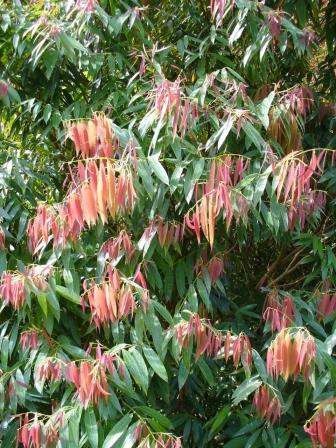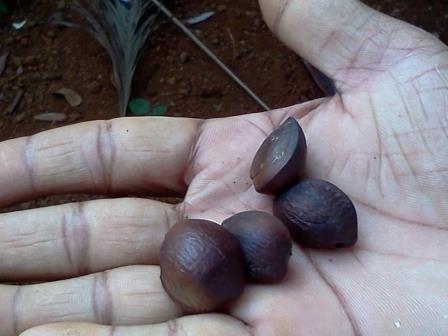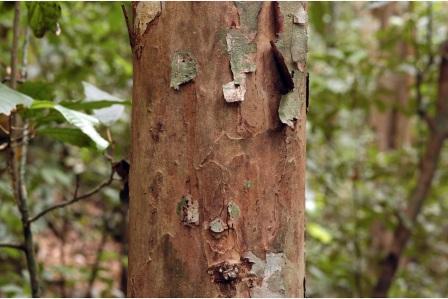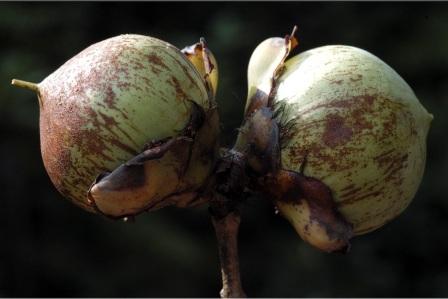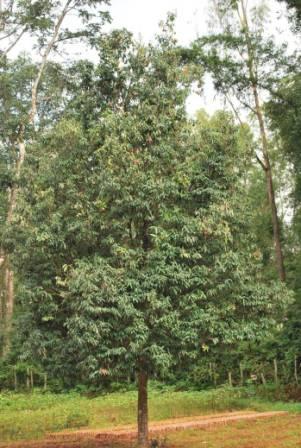Natural Regeneration :
- Naturally regenerates profusely, due to abundant seeding and its capacity to withstand shade.
Artificial Regeneration :
- Propagated by direct seed sowing and Nursery Raised seedlings.
Seed collection and Storage :
- The fruits are collected during December – January
- Collected fruits are dried in sun to separate the seed.
- The seeds are stored in gunny bags for 5 month.
- Viability of the seeds is very low.
- Germination capacity is 55 – 95 %
- Plant percent is 46-70
- Seed rate is 450-1200/ kg.
Seed Treatment :
- Cold water treatment for 24 hours.
Nursery Technique :
- The fresh seeds are dibbled in shaded Mother bed.
- The beds are water regularly and kept weed free.
- The germination starts after 10 days and completes in 2 months.
- Two leaf stage seedlings are pricked in poly bags and maintained in nursery for one year.
Plantation technique :
Direct Sowing :
- Direct sowing under slight shelter shows better results.
Nursery Raised seedlings :
- One year old nursery raised seedlings are adopted for planting.
- The seedlings are planted in the second rains in pit of 30 cm 3 at an espacement of 1.8 m X 1.8m
Care & Disease Control :
- Constant weeding is necessary for a period of 2 years.
- Thinning is necessary under artificial regeneration till the plants are established.
Irrigation :
For proper growth and survival it is necessary to give one or two waterings after planting. This is specifically required in arid regions. Irrigation after planting is not a prerequisite in areas having sufficient soil moisture and precipitation. Higher survival rate and better rate of growth is reported when soil and water conservation measures are also adopted.
Recommended Harvest :
Yield :
- Increment of 0.25 m /year/tree
Agro Forestory :
- Annuals crops viz. Ginger, Turmeric, Aloe, Pineapple etc. can be grown as intercrops during first 3 to 4 years of growth.
Major uses :
- The wood is moderately durable; resistant to termites and insects;
- The wood is used for heavy construction (posts, beams, rafters, joists, columns) and heavy duty flooring and furniture
- It is also used for joinery, cabinet work, tool handles, agricultural implements, vehicles and boat building.
Other uses :
Bark acts as tonic after childbirth and also useful in anemia.Bark and unripe fruit are sudorific. Leaf and flower are antidysenteric. Flower acts as stomachic, expectorant and used in piles & burning of the feet.Seed oil is antirheumatic and used in skin diseases. agricultural implements, rollers for mills, carving, rulers, and other products.


